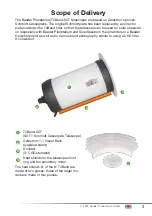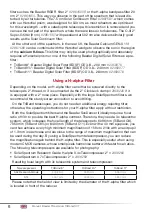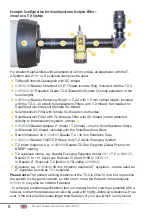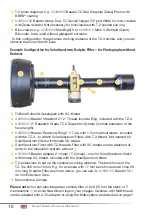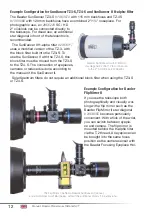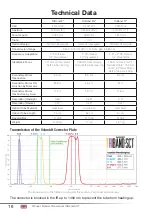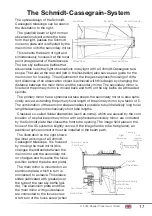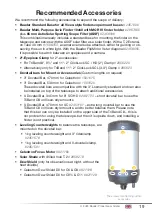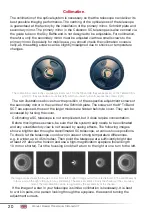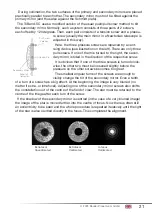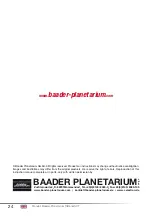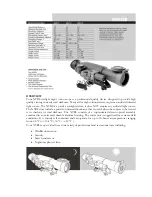
© 2023 Baader Planetarium GmbH
17
The Schmidt-Cassegrain-System
The optical design of the Schmidt-
Cassegrain telescope can be seen in
the illustration to the right.
The (parallel) beam of light from an
observation object enters the tube
from the right, passes the Schmidt
corrector plate and is reflected by the
main mirror onto the secondary mirror.
This reflects the beam of light and
simultaneously focuses it at the focal
point (image plane) of the telescope.
The two sky baffles are baffles that
also enable low-stray light observations in daylight with a Schmidt-Cassegrain tele-
scope. The tube at the rear end (left in the illustration) also serves as a guide for the
main mirror for focusing. The adjustment of the image sharpness (focusing) of diffe-
rent distances of an observation object is achieved with this design by changing the
distance between the main mirror and the secondary mirror. The secondary mirror is
fixed and the primary mirror is moved back and forth on the sky baffle via a threaded
spindle.
The primary mirror has a spherical surface shape, the secondary mirror is also sphe-
rically curved, extending the primary focal length of the primary mirror by a factor of 5.
The combination of these mirror shapes makes it possible to build relatively long focal
length telescopes in mechanically short tube lengths.
Classical, so-called Seidel aberrations (such as coma), which are caused by the com-
bination of a spherical primary mirror with a spherical secondary mirror, are corrected
by the Schmidt plate that closes the front tube opening. The image field plane in the
focus of the SC system is slightly curved. If the image field is to be flat (planar), an
additional optical corrector must be installed in the beam path.
The illustration on the right shows
the inner workings of a Schmidt-
Cassegrain telescope. It is focused
by moving the main mirror (this
changes the distance between the
main mirror and the secondary mir-
ror changes and thus also the focus
position behind the tube end plate).
The main mirror is mounted on an
aluminium plate, which in turn is
connected to a sleeve. This sleeve
slides (lubricated with grease) over
the tube of the rear sky baffle (gui-
de). The aluminium plate and thus
the main mirror with guide sleeve
are connected to the focus screw.
A left turn of the focus screw (when
Main Mirror
Image Plane
Secondary Mirror
Sky Baffle
Schmidt Corrector
Accessory Thread
("Visual Back")
Focus Mechanism
Back of Tube
Back of Tube
Main Mirror housing
Guide Sleeve
Sky Baffle
Main Mirror
Focusing
Right
Left
(clockwise) (counter-
clockwise)
Main Mirror

